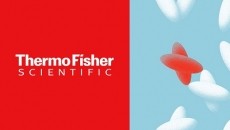Upgradeable RFID may answer industry concerns
radio frequency identification (RFID) labels, has launched two new
UHF (ultra high frequency) EPC (electronic product code) multi-
protocol printer/encoders, the Zebra R110Xi and R170Xi.
In addition to their built-in multi-protocol flexibility, these printer/encoders can be easily upgraded to include future protocols as existing standards evolve and new ones emerge.
Zebra argues that this protects companies in the long-term against the uncertainty of changing RFID protocols and standards, a position that speaks to one of the primary concerns facing the pharmaceutical manufacturing and distribution industries as they explore the role of RFID in supply chain management.
A recent report published by Accenture, based on the results of one of the first pilot studies of RFID/EPC in the pharmaceutical supply chain, suggested that there were considerable benefits to be had in reducing costs and improving inventory management with the technology.
But companies are worried that the massive investment required could be for nought if standards are changed, especially as it has been argued that the current EPC is not robust enough to prevent cloning.
With current EPC specifications, it is possible to programme one chip with the exact data of another, effectively cloning the first chip. And without guaranteed authentication, the usefulness of RFID is significantly reduced. Companies are understandably concerned that expensive upgrades are just around the corner as the technology advances.
But Zebra contends that the R110Xi and R170Xi eliminate this concern by being the first multi-protocol RFID printer/encoders to provide fully integrated support for Class 1, Class 0, Matrics' 0+ (read/write), ISO 18000-06B and Philips UCODE 1.19. The company also offers a cost-free upgrade path for support of "Gen 2" and other future RFID protocols as they evolve.
"Our customers told us they have an immediate need for a low-risk, cost- effective solution that supports both current and future smart label standards to enable them to meet RFID compliance mandates," said Bob Cornick, vice president and general manager of RFID for Zebra.
"These printer/encoders meet this requirement. Zebra's objective is to provide a broad array of tools to help ensure that the RFID investments our customers make today deliver long- term benefits and effortless accommodation to evolving standards and technology shifts."
Zebra's R110Xi and R170Xi are the only printer/encoders to embed ThingMagic's Mercury4e RFID reader module, which uses advanced software radio technology to read and encode virtually any EPC tag without compromising performance. The reader's unique software architecture allows remote software upgrades for new protocols, including the forthcoming EPC Generation 2, which will be downloadable free of charge on Zebra's website.
The new printers/encoders also support XML encoding to facilitate integration into enterprise systems, automatic inlay position calibration for smart label formatting, program position for flexibility of transponder placement, and multiple power levels for precisely encoding small labels.
RFID tags are tiny computer chips connected to miniature antennae that can be affixed to physical objects. The most commonly application of RFID contains an Electronic Product Code (EPC) with sufficient capacity to provide unique identifiers for all items produced worldwide.
When an RFID reader emits a radio signal, tags in the vicinity respond by transmitting their stored data to the reader. Passive (battery-less) RFID tags, read-range can vary from less than an inch to 20-30 feet, while active (self-powered) tags can have a much longer read range. The data is then sent to a distributed computing system involved in supply chain management or inventory control.















